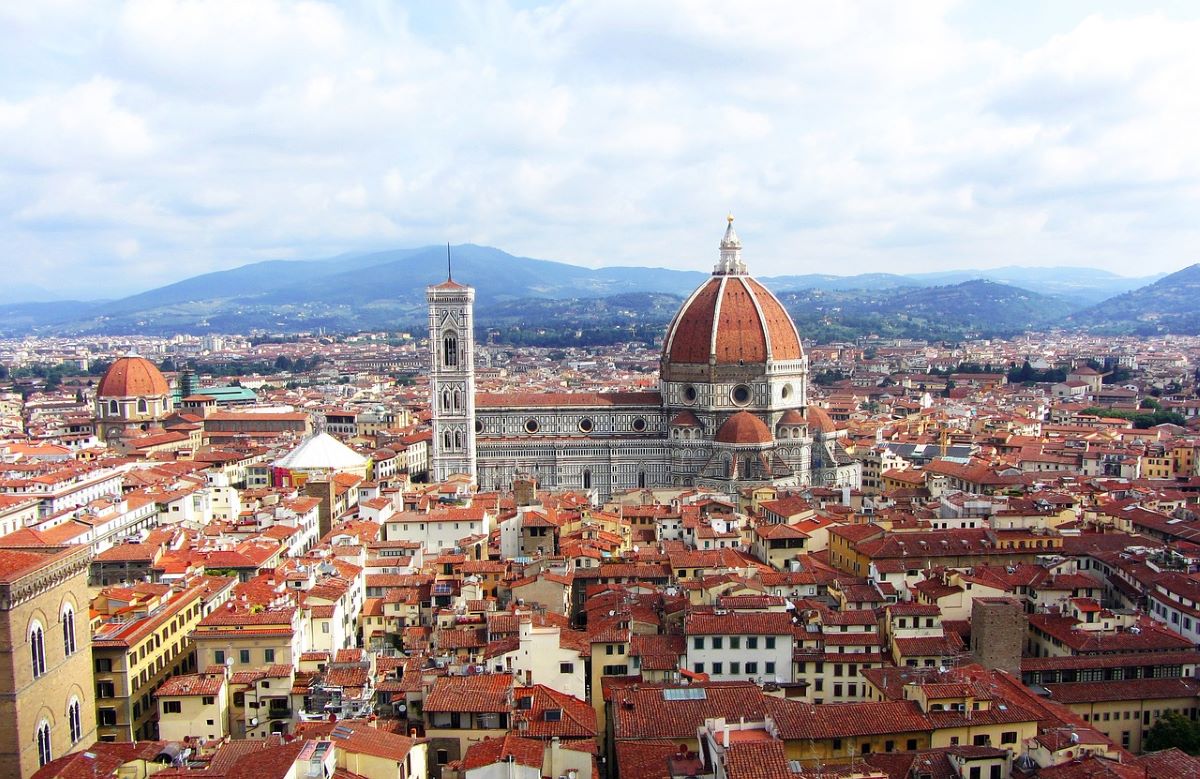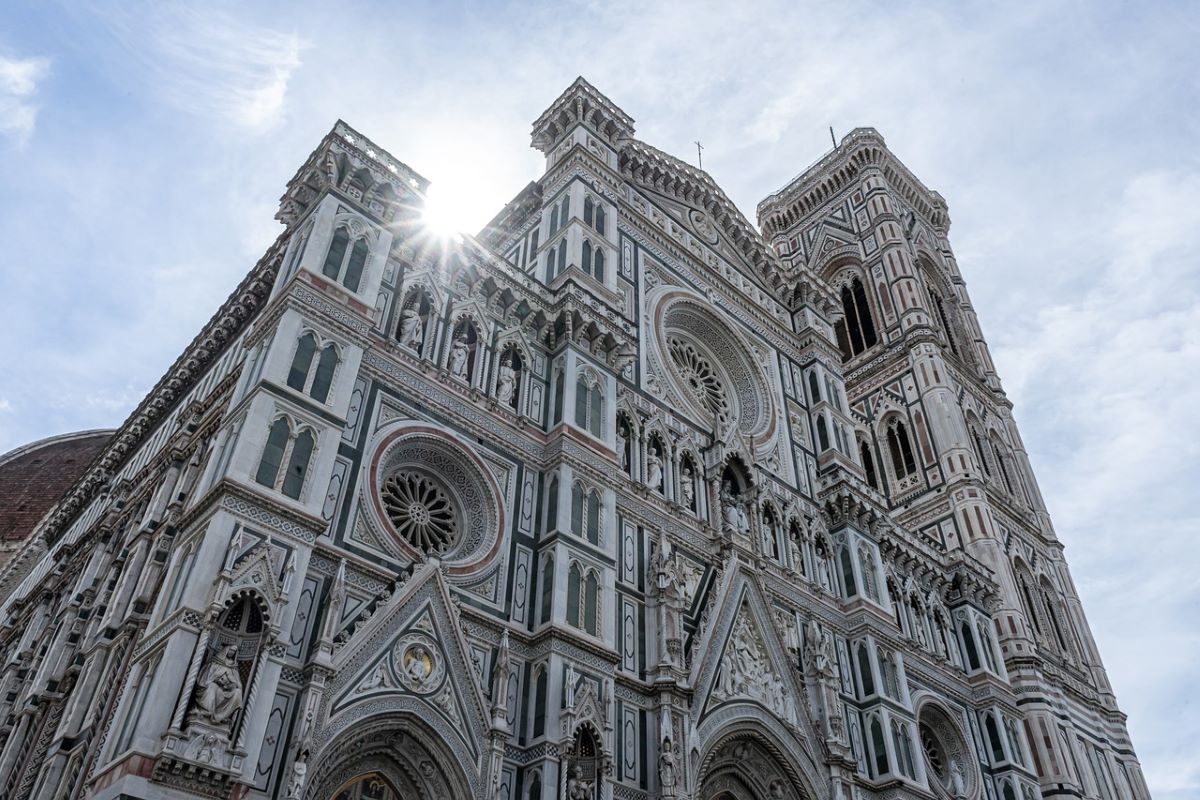
Image | Pixabay
One of the largest temples in Christendom is the Florence Cathedral, popularly known as the Duomo. You have surely seen it in many photographs and travel guides as it is an emblem of this Italian city and its unique façade and huge dome are unmistakable. However, nothing compares to the experience of seeing it in person and walking inside and around it.
If you want to know more about the Duomo of Florence, we recommend that you keep reading because in the next post we will talk in detail about one of the masterpieces of Gothic art and the first Italian Renaissance. Join us!
Origin of the Duomo of Florence
The construction of the Cathedral of Santa María del Fiore began in 1296 on the old temple dedicated to Santa Reparata, which had become too small to accommodate the faithful in a growing city. The works began under the direction of Arnolfo di Cambio and after his death, the Guild of Wool Art responsible for controlling the works hired Giotto, who was mainly in charge of the tower, and later Francesco Talenti.
In 1380 the roof of the three naves and the first three arches were completed. Already in the XNUMXth century the construction of the dome began under the orders of Filippo Brunelleschi, the first Renaissance architect, who had to face technical problems since the excessive weight of the dome could not support the traditional structures with which they were working at that time. . After years of study, he devised a new method that resulted in a self-supporting double vault.
The interior decoration of the dome of the Florence Cathedral was carried out by Giorgio Vasari and Federico Zuccari and the scenes represent the Last Judgment.

Image | Pixabay
Dimensions of the Duomo of Florence
The Cathedral of Santa Maria del Fiore or the Duomo is the fourth largest church on the planet after Saint Peter in Rome, Saint Paul in London and the Milan Cathedral. It is 160 meters long, 43 meters wide and 90 meters long in its transversal nave. The interior height of the majestic dome is 100 meters and 45,5 meters in outer diameter.
Interior of the Duomo
With a Latin cross plan and three naves supported by three pillars, the Duomo is characterized by its sobriety and has a great sense of spatial emptiness. As the cathedral was built with public funds, some of the art objects in this church are dedicated to the illustrious people and military leaders of Florence.
Most of the decorative elements such as sculptures or original religious pieces are displayed in the Opera del Duomo Museum for conservation reasons. so they were replaced by copies in the Cathedral, the Battistero and the Campanile. In this museum explanatory models and plans of the construction of Santa Maria di Fiore are also displayed.
Inside the Duomo it is not allowed to visit the chapels but near the entrance there is access to go down a small crypt discovered in the middle of the XNUMXth century where you can see the tomb of Brunelleschi, the author of the famous dome of the temple and of a multitude of decorative statues. A great honor, since at that time, architects were not buried in crypts.

Image | Pixabay
Climb to the dome
The climb to the dome of the Duomo is quite an experience. You have to be mentally prepared to climb the more than 450 steps of different shapes and types that separate the viewpoint from the street. It will be necessary to have some adventurous spirit since the last section is made almost vertically between the exterior and interior vaults.
However, those who want to contemplate the skyline of Florence in a more relaxed way can go to Giotto's Campanile. Both options are great for enjoying art in its purest form and stunning views.
Surroundings of the Duomo of Florence
In the historic center of Florence, especially in the area around the Duomo, there are multiple museums and collections to soak up the best art in the city.
A few minutes walk from the Duomo is the Bargello museum. Works by Michelangelo, Donatello and Verrocchio are housed here, although there is also a collection of Islamic art and an armory.
Right behind the Florence Cathedral is the Opera del Duomo Museum with an important collection of Donatello's works as well as other valuable pieces from the Duomo, the Baptistery and Giotto's Campanile.
To learn about anthropology, we can go to the National Museum of Anthropology and Ethnology in the Non Finito Palace in via del Proconsolo.
Other places of interest in the city are the Palazzo Vecchio in the Piazza della Signoria. Near this building is the Uffizi Gallery, one of the most visited cultural spaces in Florence, preserving such relevant paintings as The Birth of Venus by Botticelli or the Adoration of the Magi by Leonardo da Vinci.